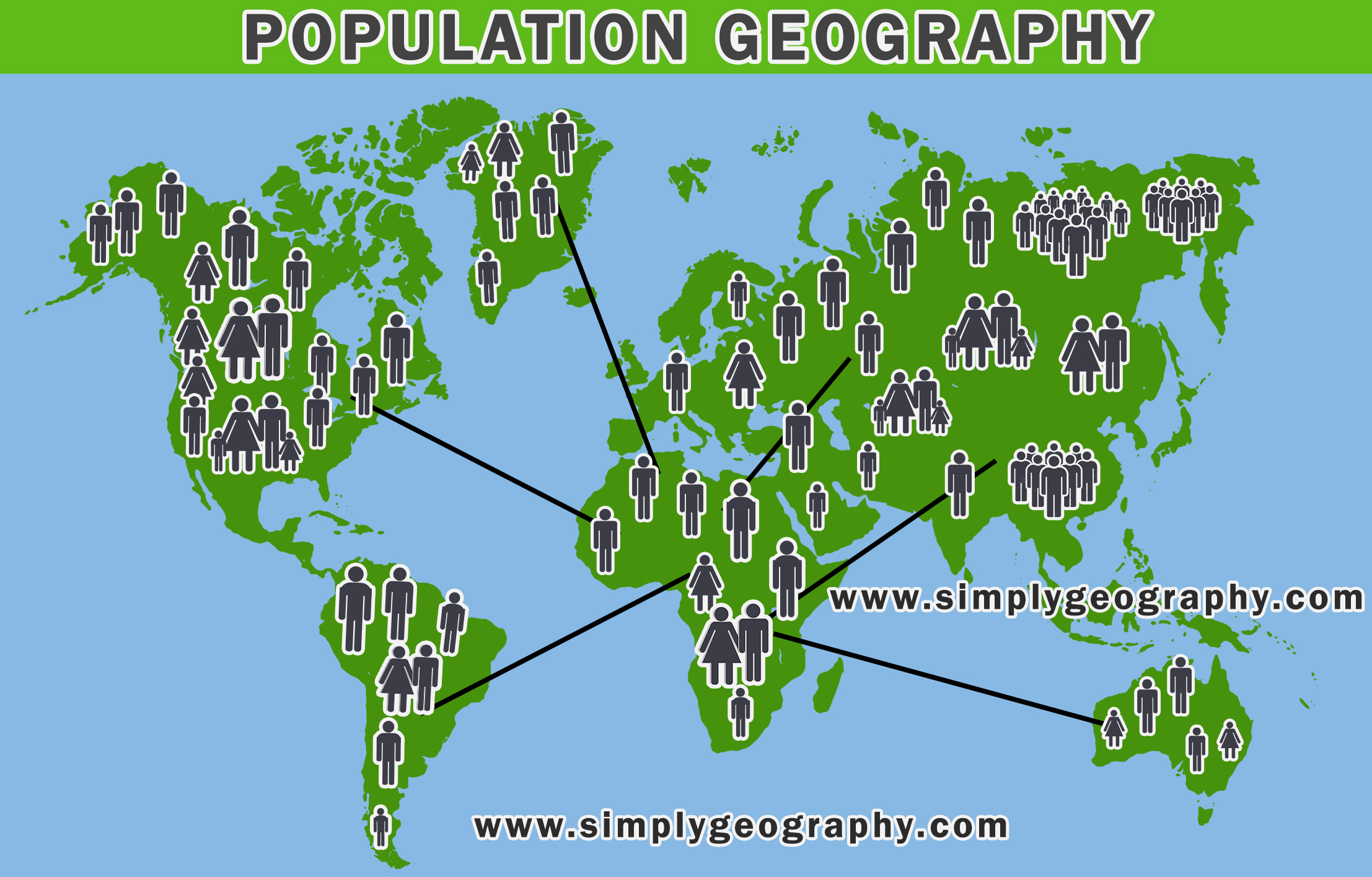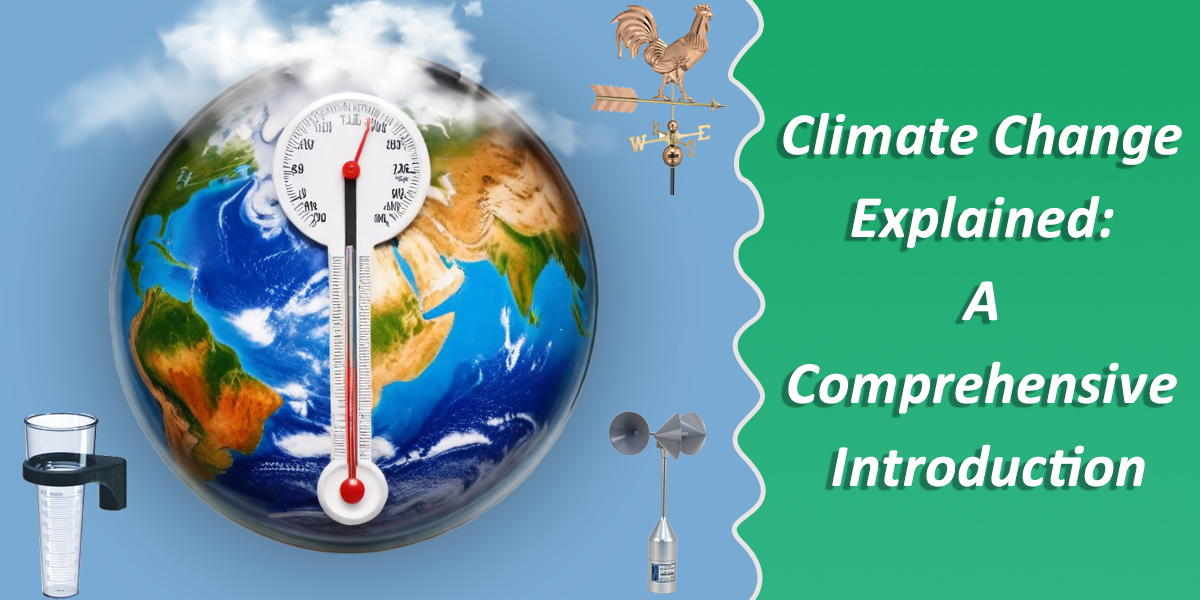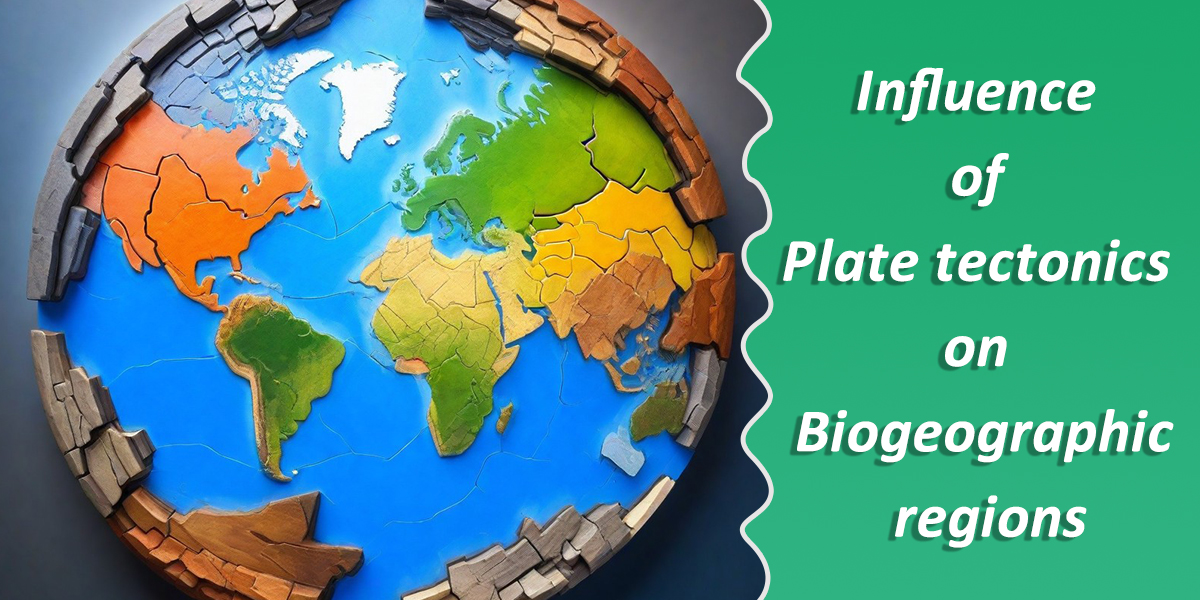Definition of population Geography
Population geography is a branch of human geography that is concerned with the study of the spatial distribution of the human population over the surface of the earth over time, its patterns (in terms of their numbers, performances, and their settlements), with reference to their physical and cultural environment.
It is important to study population geography, so as to understand how human populations interact with their immediate environment, how they influence and are influenced by factors like economic, political, and social factors, and also how humans influence the regional and global patterns of development and change.
Historical development of population geography
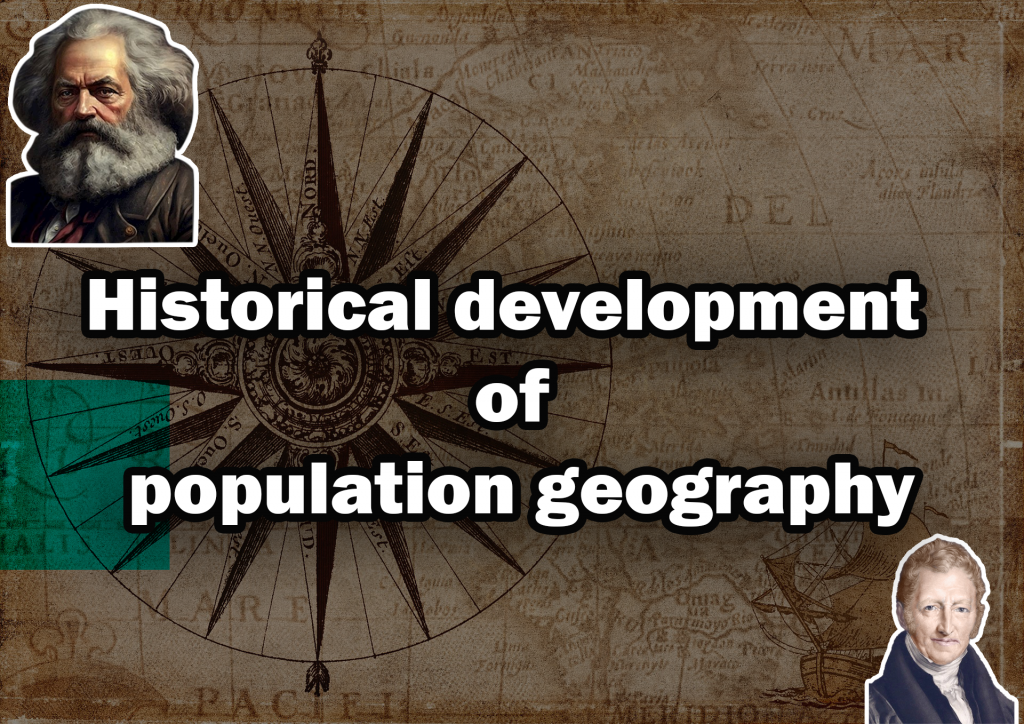
Over time, the field of population geography has advanced, adopting modified theories, methods, and data sources. The historical development of population geography can be traced from the 18th century to the mid-20th century. Below are the following theories that have contributed to the historical development of population geography, they are;
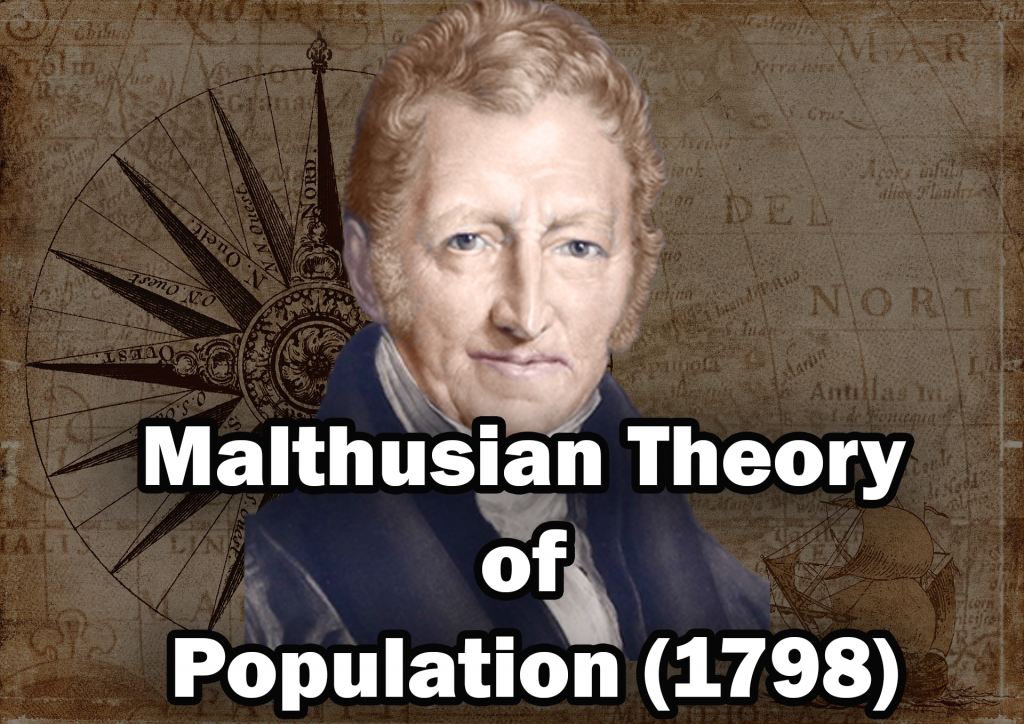
1. Malthusian Theory (1798): In the 18th century, in man’s quest to understand the relationship between population and resource availability, various authorities, researchers, scientist, etc. have proposed their theories concerning the relationship and the consequences of an increasing and uncontrolled population growth.
One of these notable theorists was Thomas Robert Malthus. Thomas Malthus was a popular British economist, who in 1798 made a publication of his famous book “An Essays on the principle of population”. Thomas Malthus warned against uncontrolled population growth, in the face of limited food availability which can lead to famine, disease, and crisis.
He stated that, while population increases in geometric terms or patterns (i.e. 1, 2, 4, 6, 8), food production on the other hand increases in an arithmetic pattern (i.e. 1, 2, 3, 4, 5, 6). Thomas Malthus proposed that the only way to prevent this crisis was through what he called “Preventive Checks” and “Positive Checks”.
MALTHUS PREVENTIVE CHECKS
According to Robert Malthus, humanity should be compelled to take certain steps and make sacrifices that can ensure a sustainable era of population growth without starting a crisis. The following are the preventive checks that Robert Malthus Proposed;
- Delays in marriages
- Birth Control
- Policies to discourage mass production of children.
MALTHUS POSITIVE CHECKS
The following are the preventive checks that Robert Malthus Proposed;
- Environmental disasters
- Poverty
- War
- Famine
CRITICISM OF MALTHUSIAN THEORY

- Critics have it that, at the time of his writings and publications, the capacity of the world and policymakers to generate data was quite low and inaccurate. Therefore, Mathus Publications are not backed up with accurate data.
- Malthus’s theory has very well been faulted as science, inventions, innovation, discoveries, involvement in the use of technology, improvement in medical science, and the elimination of diseases like measles, smallpox, and chickenpox that affected mostly children at young ages, etc. gradually emerged, etc.
- Critics have also maintained that apart from feeding from society, humanity is also gifted with the capacity to contribute to the development of society.
- Contemporary critics of Malthus’s Theory believe that all that Thomas Malthus said and wrote about in his essay, is not applicable to other continents in the world (especially Asia and Africa) except Europe.
- Malthus’s position against early marriages has been opposed by contemporary critics because, for them, it is against biblical injunctions and also an infringement on human freedom.
- In the agricultural sector, the coming up of new lands has addressed Thomas Malthus’s adverse position.
- The massive improvement and investments in various modes of transportation have in a way faulted Malthus’s Adverse position.
2. Marxian Theory of population growth (1848): The Marxian theory (a.k.a Marxism) was developed by the German philosopher and economist Karl Marx in 1848. The Marxist theory is a political, economic, and social philosophy that focuses on the analysis of capitalist society and the ways in which social inequalities are created and managed in a capitalist society.
This theory of population growth was known as the theory of surplus population. If you read more about Karl Marx’s theory, you will discover that Karl Marx wasn’t a geographer but he gave some ideas about population growth while he was postulating his general theory of communism and scientific interpretation of history in his books like – “The Communist Manifesto (1848)” and “Das Kapital (1867)”.
He didn’t propose any theory of population separately, but his theory of surplus population is deduced from his theory of communism. At the time that he was publishing these books (1848 and 1867), industrialization was heading toward its peak and large-scale industrialization was leading to the capitalistic mode of production in society. He criticized the Malthusian theory of population.
Marxist Population Cycle
Karl Marx had the opposite idea about population growth, for Karl Marx, these social problems were not the fault of the poor workers, but of the capitalist system that exploited them. According to Karl Marx’s population cycle;
- Labour class increases its population with the hope of increasing its family income. In poor societies, it is believed that if there are more children, they would grow up and earn more income for the family’s well-being and society’s welfare.
- As the population increases, the labour supply market gains more.
- The industrial market will keep exploiting the labour class to make more profit, without increasing the wages of the labour class.
- The industrial society will acquire more resources leaving behind no resources for the labour class.
- The poor get poorer with no increase in their family income.
CRITICS OF MARXIAN POPULATION THEORY
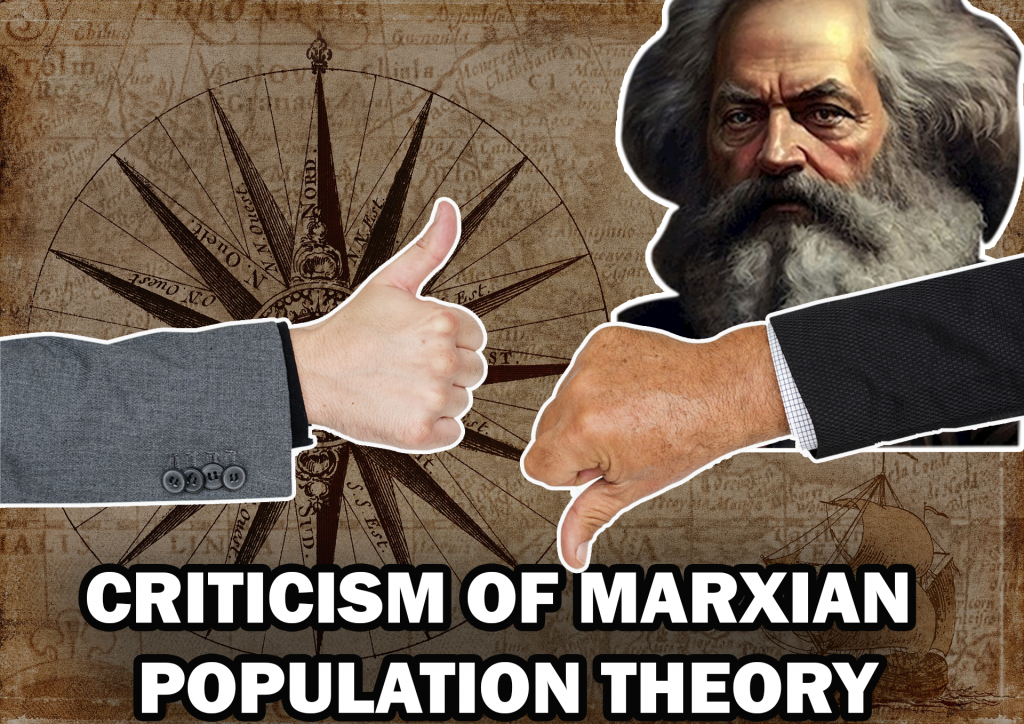
Marxian theory of population has faced a variety of critics despite earning recognition and support from many scholars and researchers, the following are the key critics of the Marxian theory of population;
- Critics have it that Karl Marx underestimated the capacity of technology in sustaining production to match the rate of population growth.
- According to feminist scholars, Karl Marx’s theory of population failed to recognize the social construction of gender roles and overlooks the reproductive labour of women.
- It is believed that Marx’s population theory is very deterministic and therefore fails to give an account of the diversity of historical experiences of population growth and the labour sector.
- Critics have it that, Karl Marx’s population theory is ignorant of the ecological impact of growth and industrial development.
NATURE OF POPULATION GEOGRAPHY
The following are the nature of population geography;
1. SYSTEMATIC NATURE: The systematic nature of population geography refers to a general or specific aspect of a physical or human phenomenon in a given geographical space that is presented in an orderly manner in accordance with a system of the plan. According to the presidential address of Trewartha in 1953, population geography switched from the regional nature of population geography to the systematic nature of population geography.
Under the systematic nature of population geography, various topics or components of the population in a given area are studied systematically. It is focused on systematically studying population distribution and density, population evolution and composition, resources, population problems, population planning, management, and policies in a specific geographical area.
Therefore, population geography’s systematic nature allows for the creation of generalized theories and formed models.
2. REGIONAL NATURE: Regional geography is the study of all aspects of a certain space or region. This nature emphasizes a specific region. Prior to Trewartha’s introduction of population geography in 1953, population studies were a component of regional geography. Each regional geography invariably included a chapter on population while explaining the elements of regional character. Take Nigeria, for example, the country is divided into several tiny areal units called regions, and such areas may be delineated by the homogeneity of physical, political, cultural, or demographic factors.
3. DYNAMIC NATURE: Population geography is particularly dynamic in nature because various modern issues are constantly being incorporated into its surroundings. The population’s size, growth, and age distribution are examined in light of its dynamic nature. Additionally included are the rates of birth, death, immigration, and emigration.
For instance, Lagos, one of the cities with the fastest population growth worldwide, has seen a significant rise in its population because people from other states within Nigeria migrate there for better economic opportunities like Job employment, education, lucrative skills, getting more business clients, etc.
4. ECOCENTRIC NATURE: The existing natural resources are under more stress as the population grows. The scarcity of resources, desperate use of resources, disregard for natural laws and principles, and other factors have all contributed to some issues with human life. What should be our method of interaction, the best way to use resources without endangering nature, etc. should also be placed as a priority in population geography.
Population geography is by its very nature a vast synthesis of various demographic dynamics. the main components of population studies, which are extremely dynamic in nature. Because of this, a variety of detailed descriptions, from ecological ethics to demographic aspects, have been expressed genetically in different sections of the study.
5. MULTIDISCIPLINARY NATURE: Population Geography is multidisciplinary in nature as it is not solely the domain of any social science. Except for geography, demography, sociology, anthropology, economics, mathematics, and social sciences, history plays a vital role in making significant contributions to understanding various aspects of the population.
For example, population geography uses demographic analysis to examine population patterns and trends across various geographic areas and historical eras. Also, To understand the social and cultural factors that influence population growth and distribution, such as migration patterns and fertility rates, population geography draws on sociology.
population geography is multidisciplinary in nature because it draws on different fields of study to examine population patterns and processes, including social, cultural, economic, and geographic factors.
6. HUMANISTIC NATURE: Population geography being humanistic in nature means that it involves more than just quantitative statistical techniques to explain the causes, effects, and outcomes of population patterns. It also encompasses qualitative categories of human geography such as cultural geography, political geography, social geography, and urban geography.
Its focus is on enhancing human skills, and knowledge, and modifying their behaviour to produce well-equipped and enriched citizens who can contribute positively to society.
In addition, population geography, with its humanistic approach, addresses a range of value-oriented problems, such as child and women exploitation, slavery, labour force, uneven consumption, and malnutrition. By understanding the underlying social, cultural, economic, and political factors that contribute to these problems, population geographers can suggest strategies and interventions for addressing them.
DEMOGRAPHY AND POPULATION GEOGRAPHY, WHAT’S THE DIFFERENCE?
Demography and population geography are two disciplines or fields that are popularly known to deal with the study of human populations. But let us not mix them up, while they share some similarities, they are different in their approaches and focus. Let’s take a look at the key differences between demography and population geography below;
Demography is the discipline that deals with the study of the characteristics of human populations like distribution, size, dynamics, and composition. Demography is also focused on factors such as birth and death rates, human migration patterns, and the social and economic factors that influence growth and change in the human population. It uses statistical analysis and mathematical models to describe and predict population trends.
On the other hand, population geography is a branch of human geography that focuses mostly on spatial patterns, distribution and processes of the human population. It studies the interactions between humans and their physical and cultural environments, including issues such as rural-urban migration, urbanization, population density, and spatial inequalities. Population geography is concerned with the distribution of populations across space, and how these distribution patterns change over time.
With the following points listed above, we can be convinced that though demography and population geography have similarities, they are not the same thing.
POPULATION GEOGRAPHY IN THE CONTEXT OF WORLD POPULATION
Population geography sheds light on how people are distributed across various geographical areas, how they change over time, and how these changes affect societies and the environment in the context of the world’s population.
The following are some key aspects of population geography in the context of world population:
i. Population Distribution: Population geography studies how people are distributed around the world. It examines the determinants of where people choose to reside, including climate, topography, resource accessibility, economic opportunities, and historical and cultural aspects. It also looks at variations in population density (the number of people per unit of area).
ii. Population Growth and Decline: Population geography studies population changes over time, such as population growth and decline. It looks into birth rates, death rates, migration patterns, and other demographic factors that influence population growth or decline in various parts of the world.
iii. Urbanization: Urbanization is the process of the growth and expansion of cities, and it is one of the topics explored by population geography. It looks at the push and pull factors that influence migration from rural to urban areas, the expansion of megacities, and the difficulties brought on by accelerated urban development.
iv. Migration: Population geography places a lot of emphasis on migration. It looks into both internal and external migration within nations as well as people moving across borders. The study of population geography examines the driving forces behind migration, including monetary incentives, social and political dynamics, and environmental factors. Additionally, it looks at how migration affects both sending and receiving regions.
v. Population aging: The increase in the proportion of older people in a population, is a demographic phenomenon that population geography addresses. It examines the factors that contribute to population aging and its effects, as well as the social, economic, and healthcare repercussions for nations and areas with aging populations.
vi. Demographic Transition: A key idea in population geography is the demographic transition theory. It discusses how social and economic advancement caused historical shifts in birth and death rates from high to low. Population geography examines how different regions are positioned within this demographic transition and the implications for population growth and structure.
In conclusion, Population Geography is an important field of study that investigates the distribution, growth, and characteristics of populations all over the world. Population Geography provides valuable insights into the dynamics and challenges of human populations by analyzing demographic indicators such as birth rates, death rates, migration patterns, and population density.
To address issues like urbanization, migration, and sustainable development, population geography research and understanding must continue. With the knowledge of population geography, Policymakers, urban planners, and social scientists can create resilient and inclusive societies by analyzing and forecasting population trends.

